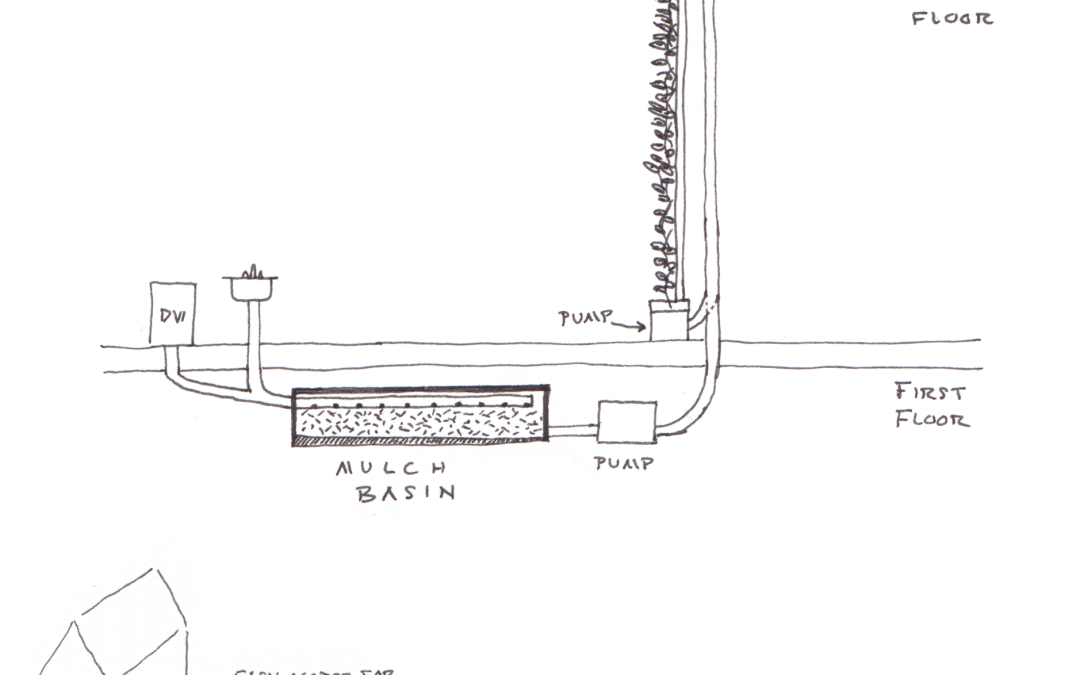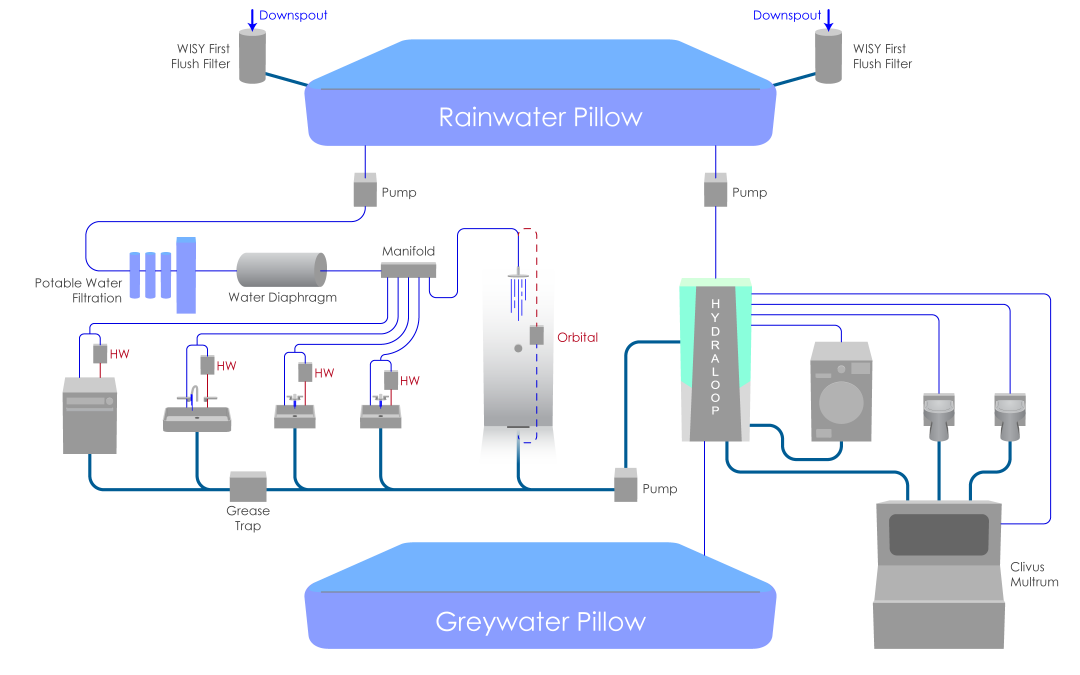
Indoor Kitchen Mulch Basin? Solving the On-Site Wastewater Management Problem
Dear Readers,
This blog is short and sweet, because at the moment, ‘tis only an idea. For a refresher on our current ideas and challenges with treating all of our wastewater on-site, check out The Water Petal on our presentation blog. It explains in depth the depicted diagram shown below:
One of our issues with the above plan is we are unsure on what that filter should be in between our grease trap and indoor greywater garden wall. We have not been able to find any manufactured filter that is willing to treat kitchen water…so we are being encouraged to get creative, while still adhering to code….
An indoor kitchen mulch basin?
A mulch basin is a basin filled with mulch (woodchips) and a drain at the bottom. When effluent (in our case, kitchen and maybe laundry wastewater) is discharged onto or into the mulch, the mulch catches all of the particles and grease, and allows the water to filter to the bottom and out the drain. I emphasize “onto or into” because some systems have the wastewater being discharged below the ground surface, and then into a mulch basin. This type of subsurface mulch basin is preferred for kitchen waste water due to its desirability to animals (noms, grease). For both surface and subsurface mulch basins, bugs naturally find their way to the greasy wood chips, and help break down the organic matter.
The mulch does need to be replaced once a year, and is advised to be disposed of as compost. Some people have actually used the old mulch as supplemental chicken feed due to its high protein content!

